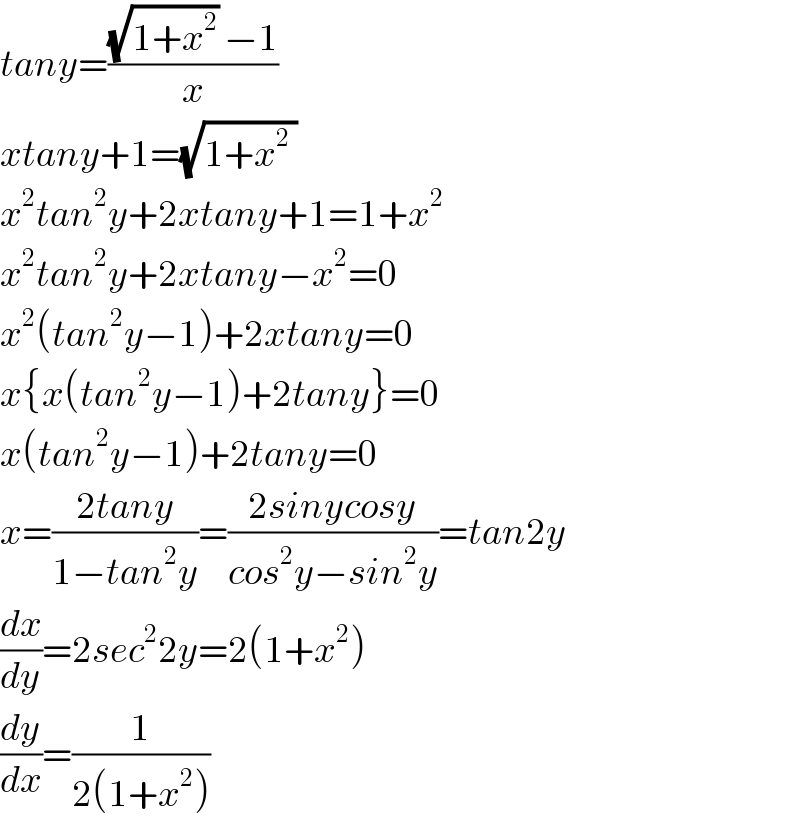
Question and Answers Forum
Question Number 38232 by rahul 19 last updated on 23/Jun/18
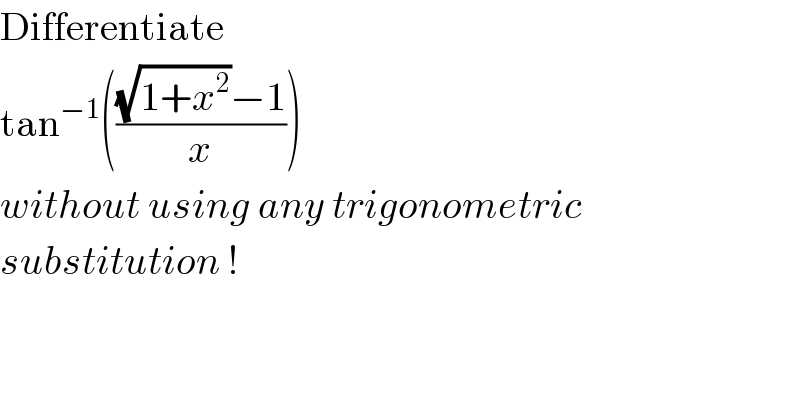
Commented by math khazana by abdo last updated on 23/Jun/18
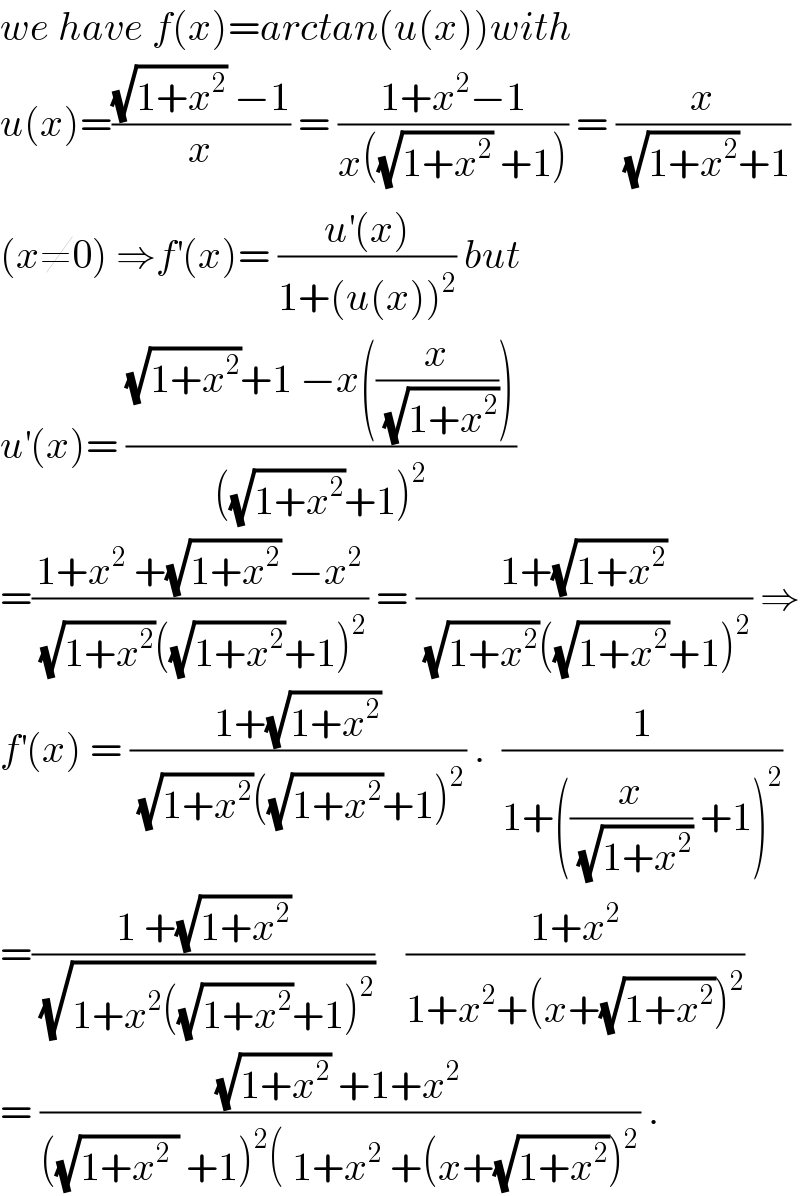
Answered by tanmay.chaudhury50@gmail.com last updated on 23/Jun/18
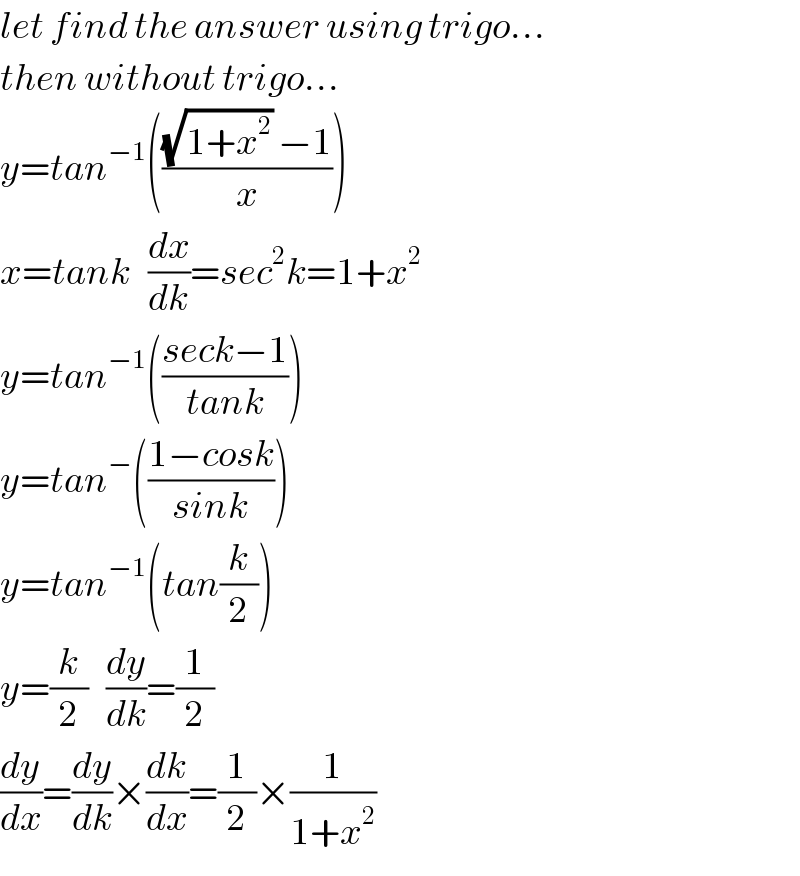
Answered by MJS last updated on 23/Jun/18
![(d/dx)[arctan x]=(1/(x^2 +1)) this is a standard derivate... we get it this way: arctan x=f(x) x=tan(f(x)) (d/dx)[x]=(d/dx)[tan(f(x))] 1=sec^2 (f(x))f′(x) 1=sec^2 (arctan x)f′(x) f′(x)=(1/(sec^2 (arctan x))) sec^2 α=(1/(cos^2 α))=((sin^2 α +cos^2 α)/(cos^2 α))=tan^2 α +1 f′(x)=(1/(tan^2 (arctan x)+1))=(1/(x^2 +1)) (d/dx)[arctan (((√(1+x^2 ))−1)/x)]= =(((d/dx)[(((√(1+x^2 ))−1)/x)])/(((((√(1+x^2 ))−1)/x))^2 +1))=((((√(1+x^2 ))−1)/(x^2 (√(1+x^2 ))))/(2((1+x^2 −(√(1+x^2 )))/x^2 )))= =(1/(2(1+x^2 )))](Q38240.png)
Answered by ajfour last updated on 23/Jun/18
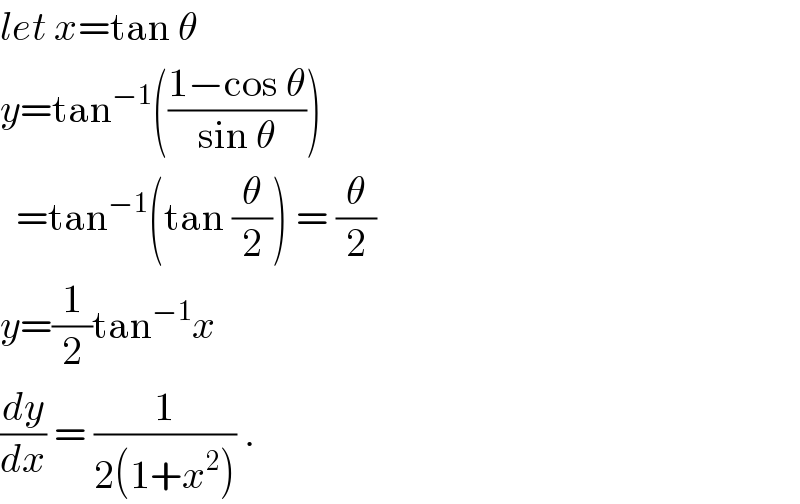
Answered by tanmay.chaudhury50@gmail.com last updated on 23/Jun/18
